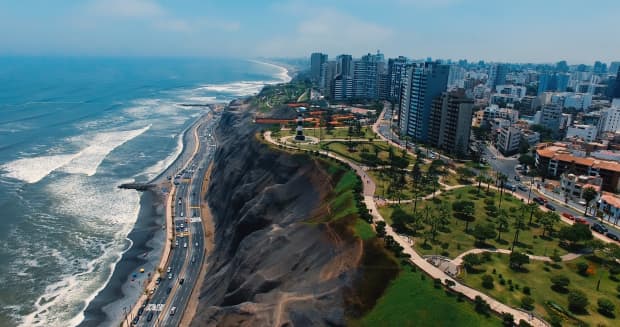This post was originally published on this site

Lima, Peru
iStockphoto
Second passports and residence in other countries have long been appealing to Americans for any number of reasons. These days, that interest is clearly rising—sharply.
All over the internet you’ll find resources to help you with this process, whether that means buying a passport or tracing your genealogy in hopes that a relative’s original citizenship will magically descend upon you, too. Those are tried and true paths, for sure. But one—buying a passport—requires a minimum of $100,000. And the genealogy route is hit or miss, depending on country.
There is, however, a less-costly, more-organic, nearly assured path: Move somewhere and gain citizenship—and a passport—via the naturalization process.
That’s not as difficult as it might sound.
While lots of countries require that you live within their borders for a decade or longer before you can apply for citizenship, several impose a much-shorter timeline of between two and five years. And as a U.S. expat who’s lived in Prague now for nearly two years, I can tell you those years fly by quickly.
Read: Here are the countries with the most U.S. retirees collecting Social Security
So, if you’ve ever given consideration to securing citizenship and a second passport, here are several countries where the process of citizenship-by-naturalization is relatively quick.
Argentina: 2 years
You will find lots of misinformation on the internet regarding Argentina. These are the definitive requirements:
- Proof that you’ve lived continuously in Argentina for two years.
• Be over 18 years old. • Proof of adequate income or employment. • Passport. • A DNI card—an Argentine residence permit. • Proof of no serious criminal record.
And that’s it. Two short years in one of the world’s truly beautiful countries and you can apply for citizenship and, thus, an Argentine passport—the 19th most-powerful passport on the planet in that it gives you access to 170 countries without needing a visa.
Yes, Argentina seemingly has a financial crisis du jour. Still, if your life is denominated in dollars, your lifestyle in the land of tango will be pretty sweet. Argentina allows you to hold dual nationality as an American.
Peru: 2 years*
The asterisk here ties to Peru’s requirement that a non-Peruvian can apply for citizenship two years after acquiring residence in the country. That’s not hard; with the correct documents you can apply for Peruvian residence while you’re visiting on a tourist visa. But it could take several months to complete the residence process.
Once you’ve been a resident for two years, you can apply for citizenship. The necessary documents are similar to those in Argentina, but there are also requirements that you:
- Write an application to the president of Peru. • Prove you’re healthy. • Can communicate in Spanish, and pass an exam about Peruvian history, culture, and geography.
Ecuador, Honduras, Poland, Paraguay: 3 years
Ecuador demands three continuous years, and if there is an interruption of more than 90 days, you have to start over.
Honduras shortens the requirement to two years if you are Ibero-American (from a Spanish or Portuguese-speaking country).
Poland is interesting because it’s a European Union member, meaning this is the quickest path to an EU passport. You’ll also need proof of a stable source of income, such as Social Security or a pension. Perhaps the hardest requirement: proof—by way of official certificate—that you can speak Polish, not one of the world’s easiest languages for native English speakers.
Paraguay is straightforward: Live there for three years as an upstanding citizen.
Read: A record number of Americans are renouncing their citizenship — here’s why
Brazil: 4 years
Very much like Paraguay in how easy it is. Four years of continuous residence in the country, command of Portuguese, and no criminal record.
Australia, Barbados, Belize, Chile, Colombia, Czech Republic, Finland, France, Ireland, Jamaica, Latvia, Mexico, Netherlands, New Zealand, Panama, Singapore, Sweden, Taiwan, Thailand, Turkey, United Kingdom, Uruguay: 5 years
This is not a complete list of the five-year countries. Quite a few others impose requirements that make them less appealing (Indonesia and Japan require that you relinquish your U.S. nationality), or they’re countries most of us won’t rush to, such as Iran, Congo, or Afghanistan.
Most of these countries are straightforward: five years of continuous residence.
Finland requires you speak Finnish or Swedish, the Netherlands requires you’re conversant in Dutch, and Thailand demands you speak Thai (again, quite the challenging language).
Panama wants to know you can speak Spanish and have a basic understanding of Panamanian history, geography, and politics.
This was first published by International Living — A Second Passport Without Having to Buy or Inherit It

